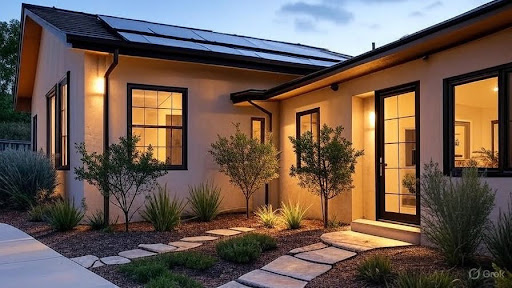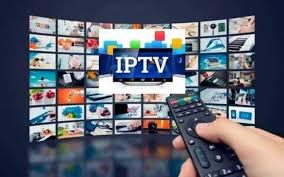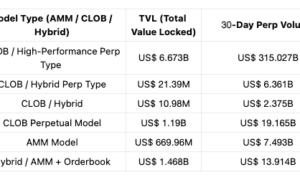In the heart of the Buckeye State, homeowners are increasingly embracing the future of living, driven by the desire for enhanced convenience, security, and energy savings. A smart home OH goes beyond simple gadgets; it is a fully integrated ecosystem where every device works in harmony to simplify daily life and provide a sense of peace. Companies like Sundance Ltd. are at the forefront of this revolution, offering expert guidance and state-of-the-art solutions to help you build a living space that thinks for you. The concept is no longer a futuristic fantasy but a present-day reality, allowing residents to manage their homes with a simple voice command or the tap of a smartphone. This seamless integration transforms a traditional house into an intelligent hub that adapts to your unique lifestyle and needs.
The foundational principle of a smart home is interconnectivity. By linking devices such as thermostats, lighting, security systems, and entertainment units, you create a cohesive network that can be managed from a central control panel or app. Imagine adjusting the temperature before you even leave the office, or turning off all the lights with a single command as you head to bed. This level of control not only saves time but also provides significant peace of mind. The technology learns your routines, automates mundane tasks, and offers real-time insights into your home’s performance. Whether you’re in the bustling streets of Columbus or the serene landscapes of the Hocking Hills, your home is always within your grasp, ready to respond to your commands.
The Core Benefits of Smart Living
Embracing smart home technology is a decision that delivers a multitude of tangible benefits, impacting your daily life in ways you might not have even considered. These advantages extend beyond mere convenience to include significant improvements in security, energy management, and even property value.
- Enhanced Security: A smart home provides an unparalleled level of protection. Smart locks, surveillance cameras, and motion sensors can be monitored and controlled from anywhere in the world. You can receive real-time alerts if a door is unlocked unexpectedly, a window is opened, or a smoke detector is triggered. The ability to remotely check live camera feeds or lock a door you forgot to secure provides an invaluable sense of safety.
- Energy Efficiency: One of the most significant long-term benefits is the potential for substantial energy savings. Smart thermostats learn your family’s schedule and adjust temperatures automatically to reduce energy consumption when you’re not home. Smart lighting systems can be programmed to turn off when a room is vacant or dim to conserve power. This proactive energy management not only lowers utility bills but also reduces your carbon footprint, contributing to a more sustainable lifestyle.
- Unrivaled Convenience: The most immediate and noticeable benefit is the sheer convenience. Automating tasks like brewing coffee in the morning, setting the mood for a movie night, or preparing your home for your arrival with a “welcome home” scene saves time and simplifies routines. Voice assistants like Amazon Alexa or Google Assistant allow for hands-free control, making it easier to manage your home while your hands are full.
- Increased Accessibility: For individuals with mobility issues or disabilities, a smart home can be truly life-changing. Automation can make daily tasks like adjusting blinds, changing light settings, or answering the door effortless. This technology promotes independence and allows people to navigate their living spaces with greater ease and confidence.
The Building Blocks of an Intelligent Home
To truly understand how a smart home works, it’s essential to look at the individual components that make up the whole. Each device plays a critical role, contributing to the overall efficiency and functionality of the system.
- Smart Hubs and Controllers: These are the brains of the operation. A smart hub, such as a dedicated device or a robust software platform, acts as a central command center, allowing all your disparate smart devices to communicate with each other. It translates commands from your smartphone or voice assistant into actions for your lights, thermostat, and security system.
- Climate Control: Smart thermostats are foundational to an energy-efficient home. They learn your habits and preferences, automatically adjusting the temperature to save energy. Features like geofencing can even detect when you’re a certain distance from home and adjust the climate settings accordingly.
- Lighting and Power: Smart lighting goes beyond a simple on/off switch. It allows for dimming, color changes, and scheduling, creating ambiance and enhancing security by mimicking presence when you’re away. Smart plugs and power strips give you remote control over any appliance, allowing you to turn off that forgotten curling iron or coffee maker from anywhere.
- Security and Surveillance: This category includes a wide array of devices designed to protect your property. Smart doorbells with cameras, integrated alarm systems, and motion sensors provide a robust security network. They can send instant alerts to your phone, and many systems can even communicate with local emergency services.
- Entertainment and Audio: Smart TVs, speakers, and home theater systems can be integrated into your network for a truly immersive experience. You can control your entire entertainment setup with a single app or voice command, streaming music throughout the house or creating a cinematic atmosphere with automated lighting.
Navigating Installation and Integration
The process of transitioning to a smart home can feel overwhelming, but with a strategic approach, it’s a seamless and rewarding journey. The key is to start with a clear plan and a professional partner who can guide you through the complexities.
- Consultation and Customization: The first step is to consult with a professional who can assess your specific needs and goals. Whether you want to focus on security, entertainment, or energy savings, a customized plan ensures the system is tailored to your lifestyle.
- Professional Installation: While some smart devices are “plug-and-play,” a fully integrated system requires expert installation. Professionals ensure all components are wired correctly, configured for optimal performance, and securely connected to your network. This prevents common issues like connectivity problems and security vulnerabilities.
- User Training and Support: A quality installer doesn’t just leave you with new equipment. They provide thorough training to ensure you understand how to use your new system to its fullest potential. Ongoing support and maintenance are also crucial for keeping your system updated and running smoothly.
The Future of Smart Home Technology
The world of home automation is constantly evolving, with new trends and technologies emerging at a rapid pace. The future promises even greater levels of intelligence and integration, making our homes more responsive and intuitive than ever before.
- Artificial Intelligence (AI) and Machine Learning: As AI becomes more sophisticated, smart homes will move from simply responding to commands to anticipating our needs. AI-powered systems will learn your habits and preferences so well that they can adjust the temperature, lighting, and music without you even having to ask.
- Health and Wellness Integration: Future smart homes will focus on enhancing occupants’ health. This could include smart air purifiers that automatically activate when air quality drops, or smart beds that monitor sleep patterns and adjust temperature for optimal rest.
- Advanced Security and Biometrics: Biometric security, such as fingerprint or facial recognition for entry, will become more common, offering a higher level of security than traditional locks. AI-driven surveillance systems will be able to differentiate between family members, pets, and potential intruders.
Conclusion
The path to a smarter home is an investment in your comfort, security, and future. By choosing the right technologies and the right experts, you can create a living space that not only meets your needs today but also anticipates the demands of tomorrow. The benefits are clear: a home that is more efficient, more secure, and perfectly attuned to the rhythm of your life. The growing market for smart home devices indicates a strong and sustained trend toward connected living, proving that this isn’t just a fleeting fad but a fundamental shift in how we inhabit our homes.
FAQ’s
Q: What is the most important first step in creating a smart home?
A: The most crucial first step is to establish a robust and secure Wi-Fi network. All your smart devices will depend on this network for communication, so a stable and fast connection is essential for a seamless experience.
Q: Are smart homes susceptible to hacking?
A: Like any connected device, smart homes can be vulnerable to hacking if proper security measures are not taken. It is vital to use strong, unique passwords for all devices and your Wi-Fi network, and to keep all device firmware and software updated.
Q: Can I integrate devices from different brands into one system?
A: Yes, many smart home systems and hubs are designed to be compatible with a wide range of devices from different manufacturers. Platforms like Apple HomeKit, Google Home, and Amazon Alexa are built to create a unified ecosystem, allowing devices from various brands to communicate with each other.
Q: How much does it cost to install a smart home system?
A: The cost of a smart home system can vary widely depending on the size of your home and the level of integration you desire. You can start with a few simple devices for a small investment or opt for a full-scale, professionally installed system that can be a significant financial commitment. The key is to start with a budget and a plan, and you can always add more devices over time.
Q: Do I need a professional installer for a smart home?
A: While many DIY options are available, a professional installer is highly recommended for a comprehensive, multi-component system. They ensure devices are correctly configured, integrated seamlessly, and that your network is secure. Professional installation guarantees a reliable and frustration-free experience.





























